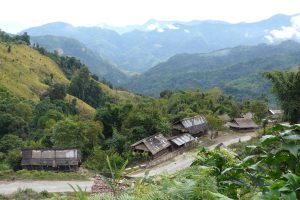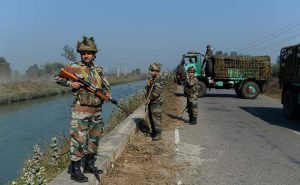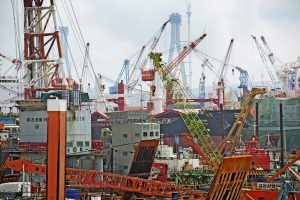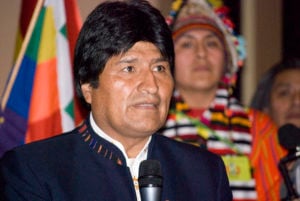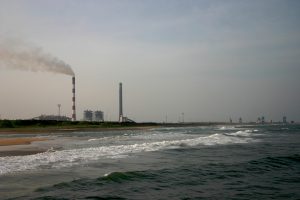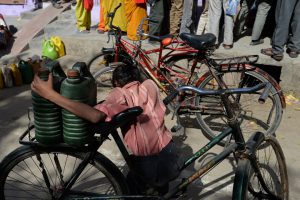The deluge of mud and waste mining materials that swept through Mariana in Minas Gerais state, eastern Brazil, on November 5 last year has left the city with a bleak future. The collapse of the Fundão tailings dam operated by mining company Samarco created an avalanche of waste that killed 19 people, destroyed five villages and spewed pollution 663.2 kilometers along the Doce river and into the Atlantic Ocean. The waterborne stain left by the waste material is now moving southwards and the Brazilian Institute of the Environment and Natural Resources (IBAMA) is also investigating whether waste has drifted northwards towards the Abrolhos National Marine Park – an archipelago that serves as a refuge for many endangered species. Environmentalists state categorically that this is the worst environmental disaster ever to occur in Brazil. Yet the mining company has still not submitted a satisfactory recovery plan, according to the Brazilian authorities. Samarco, which is owned by the Brazilian Vale and Anlgo-Australian BHP Billiton, presented a proposal considered “generic and superficial” by IBAMA owing to the extent of the disaster. IBAMA subsequently rejected the proposal. “They handed us a conceptual plan, which did not take into account the proportions of the accident. No methodology was presented,” said Fernanda Pirillo, head of inspection at IBAMA. “Diagnosis of the impacts is extremely superficial, and did not consider fish fauna, for example.” The mining company has until February 17 to deliver the revisions demanded by the agency. If Samarco fails to meet the deadline, a new fine may be imposed in addition to the initial one of US$63 million – of which the company has not yet paid a penny. According to the agency, Samarco has appealed and the case will go to court.
The environmental damage
The Fundão dam contained 50 million cubic metres of tailings from iron ore mining. According to IBAMA, the waste consists of non-hazardous and non-inert iron and manganese. The burst dam dumped 34 million cubic metres into the valley beneath it with 16 million cubic metres still gradually making its way towards the sea. In a preliminary report of the impacts, IBAMA stated that the disaster affected 663.2 km (412 miles) of waterways, destroyed conservation areas and much native vegetation, killed fish and land fauna, silted up rivers, and destroyed pastures and other agricultural land. “We hold weekly meetings with Samarco to keep them up to date on the notifications [corrective actions the company is required to undertake]. There have been 39 notifications, which range from constructing a dyke to monitoring water at the river mouth. The company is also providing information about the projects at the Fundão dam,” Pirillo explained. Conservation groups and independent researchers have been monitoring the quality of the water in the Doce river since the disaster occurred. The SOS Mata Atlântica Foundation, concluded that water quality was extremely poor at 16 of the 18 points analysed at the end of December. The river is reeling from years of pollution from nearby mining companies, steelworks and the wood pulp industry. It is still unclear how long it will take to recover the water quality after the Mariana tragedy. Since Samarco has failed to present a satisfactory plan, the government has stepped in to negotiate the creation of a foundation to restore the Doce river. This would be financed by Samarco and BHP Billiton and would count on the participation of civil society and environmental experts.
Human damage
The public prosecutor’s office in Mariana has begun a class-action suit to help victims of the disaster to secure compensation, housing and the reconstruction of their community. 274 families affected by the disaster are living in homes rented and furnished by Samarco. “We want everything to be settled, we just want to get back at least what we already had. Nobody wants any more than that. We want peace, our own place to live, our own land,” said 33-year-old Fernando Santos who used to live in the village of Bento Rodrigues, which was worst affected by the tsunami of mud. Today, he and his family live in a house rented by Samarco in Mariana city center. But the struggle goes on. The case against Samarco will now be heard by the federal court, not by the prosecutor in Mariana. Local prosecutor Guilherme de Sá Meneguin has criticised the decision. “This change in venue will lead to serious harm to those who were affected, including the restricted participation of the victims in the decision-making process, suspension of the case in an advanced phase, and the cancellation of those accords already reached.”
Economic interest and scarcity of resources
Founded in 1977, Samarco’s main product is iron ore pellets, which are sold to steelworks around the world. Owner Vale is one of the world’s largest mining companies, and one of the leading producers of iron ore, pellets, and nickel. China is one the biggest investors in Vale and is the main buyer of its iron ore. It also supplies ships to transport the ore. According to the latest company report, Samarco exported 25.1 million tons of pellets in 2014, and made a net profit of R$ 2.8 million (US$700 million). Most exports go to Africa and the Middle East (23.1%), Asia (22.4 %, excluding China), Europe (21%), and the Americas (17%). China is the single largest national market, accounting for a further 16% of the total. Roberto Galery, professor in the department of mining engineering at the Federal University of Minas Gerais (UFMG), explained that the pellets are more efficient as they contain a greater amount of components such as soda ash and limestone, which reduce energy consumption in blast furnaces. But because of the level of impurities, producing the pellets requires finer materials to be aggregated. Companies can reduce the amount of wasted stored in reservoirs like Fundão by making better use of the extracted ore and producing more highly-concentrated pellets, Galery adds. “In Brazil, high-content ore is practically gone. Every day, the ores leave the deposits with marginally lower and lower levels, everything has to be used,” said Galery. At present, mining tailings are not reused in any other sector, meaning economy and storage remain pertinent issues. “It’s still cheaper to build a tailings dam than to invest in technology to use these tailings. But as we saw in Mariana, sometimes cheap solutions cost more than expected,” Galery adds. When contacted, Samarco did not respond to our request to contribute to this article.
